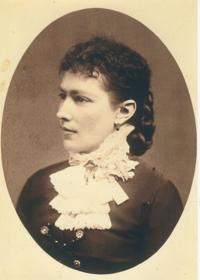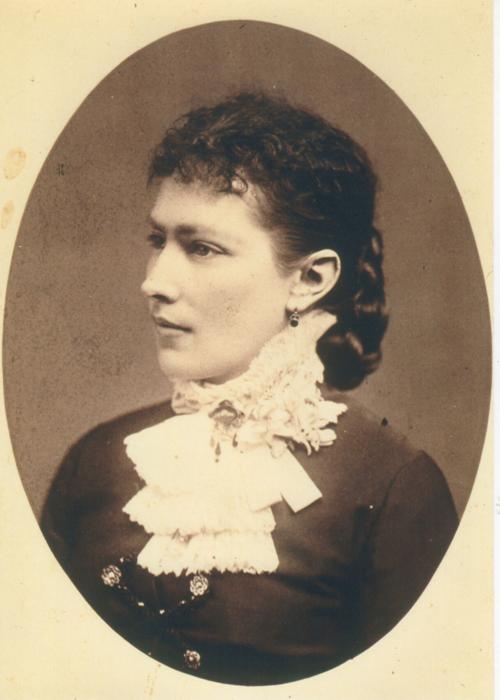Kindergarten was a relatively new concept when teacher Estelle Morehouse arrived in Arizona.
She had honed her skills for the job by attending Kindergarten Normal School in Columbus, Ohio, and favored the Froebel educational method.
German born Fredrich Froebel is considered the inventor of kindergarten and believed “play is the highest expression of human development in childhood for it alone is the free expression of what is in the child’s soul.”
Born in Portland, Michigan, on Sept. 28, 1846, Estelle received her teaching certificate at the age of 15 and taught in Michigan until she headed west in 1880.
Arriving in Globe, Estelle is believed to have started the first kindergarten in the territory.
The following year, she hitched up her skirts and rode a mule 20 miles over the Pinal Mountains before boarding a train into Tucson where she again initiated a kindergarten using the Froebel teaching system.
At age 35 Estelle was probably considered beyond marrying age, but before long she had attracted the attention of one of Tucson’s up and coming businessmen, German-born photographer Henry Buehman. Within a year of arriving in town, Estelle closed her school and returned to Michigan to prepare for her wedding. The couple married Oct. 19, 1882, honeymooned in Canada and returned to Tucson to build one of the most successful photography businesses in the west.
Henry Buehman had opened his first photography studio in Tucson in 1874. By the time he and Estelle married, he was serving as public administrator for Pima County. His involvement with the town eventually led him to hold offices such as industrial commissioner and county assessor before being elected mayor in 1895. But it was his expertise behind the camera that made Henry a valued asset to Tucson.
Estelle and Henry had two sons: Willis was born in 1883 and Albert in 1886.
Both Henry and Estelle were charter members of the First Congregational Church that was organized in 1881. After her marriage, Estelle did not reestablish her kindergarten but became active in the church’s Sunday school. Her involvement with the Women’s Christian Temperance Union lasted throughout her life, and she proudly boasted she never violated her pledge.
She started an athletic club that led to the first YMCA, and along with a group of women opened the “Reading and Recreation Rooms of Tucson” that became forerunner of the Carnegie Free Library financed by philanthropist Andrew Carnegie. Estelle served as president of the reading rooms for several years.
After Willis Buehman went to work for the El Tiro Copper Company, 40 miles outside of Tucson, Estelle planned an excursion to visit her oldest son. She rode by train to Red Rock where she learned the track had been washed out and a flat car was the only way to get to her destination. “The lady sallied forth to board the novel train,” Estelle wrote in a short story she titled, “Trip on a Flat Car.”
She sat “on the board floor at the rear end of the last car,” with her feel dangling over the end.
Fearful of falling off, Estelle was reassured by train officials that she was in no danger.
“Well,” she said, “if I fall off will you stop the train and put me on again?” to which they laughingly agreed.
The entire trip lasted a total of 1½ miles before the flatcar reached the end of the washed-out rails and Estelle boarded a train “with its comfortable wicker seats and breezy windows, in which the short journey to El Tiro was speedily completed.”
Estelle was also an integral part of her husband’s photography business as evidenced by the bulk of paperwork that shows her precise handwriting and ledger entries on the studio’s books. When Henry was away, Estelle ran the studio, and for the last few years of Henry’s life, Estelle handled almost all the studio’s business matters.
According to Estelle’s great-grandson, Ed Hutchins, Estelle and Henry bought 150 acres on the back side of the Catalina Mountains, built a ranch house, and ran about 300 head of cattle on the property. But with the lack of rain in 1895 and 1896, they lost the ranch. Buehman Canyon is named after the ranch.
When Henry died suddenly in 1912, Estelle reported he passed away with his retouching pencil in hand. She eventually sold the photography studio to son Albert for the sum of $10. Albert revived the business and became a successful photographer in his own right.
Shortly before Henry died, Estelle wrote a short history of Tucson. “Old Tucson: A Hop, Skip and Jump History from 1539 Indian Settlement in New and Greater Tucson” was published in 1911 with Henry supplying photographs for the work in which Estelle proclaimed, “Arizona is entitled to the honor of being the earliest European settlement in what is now the United States of America.”
And while she reminisced about the old mule-driven trolley cars that had been replaced by an electric streetcar line, “which goes whizzing by, making one almost imagine himself in New York or San Francisco,” she recognized the need to “(e)ducate the rising generation, then we have men of nerve, character, ability and standing to handle the stirring questions of government, problems of ways and means, and all the perplexing and knotty questions of daily life and toil.”
Although a businesswoman herself, and acknowledging that girls must be educated and trained “to think high, aim at lofty ideals,” she also felt they should “fit themselves to be good home keepers, domestic wives and helpmeets, and careful, intelligent mothers of those intrusted (sic) to their care.”
Estelle also wrote articles about Japan and the Philippines, along with a cookbook that included recipes such as Spanish beef, honey candy, honey and nut sandwiches, and baked dumplings.
Estelle died Jan. 18, 1916. Always involved with the community, she was serving as state superintendent of the Women’s Christian Temperance Union’s Department of Sunday Schools at her death.
In 1946, the First Congregational Church of Tucson dedicated the Estelle M. Buehman Chapel to the woman who had helped establish the church 65 years earlier.





